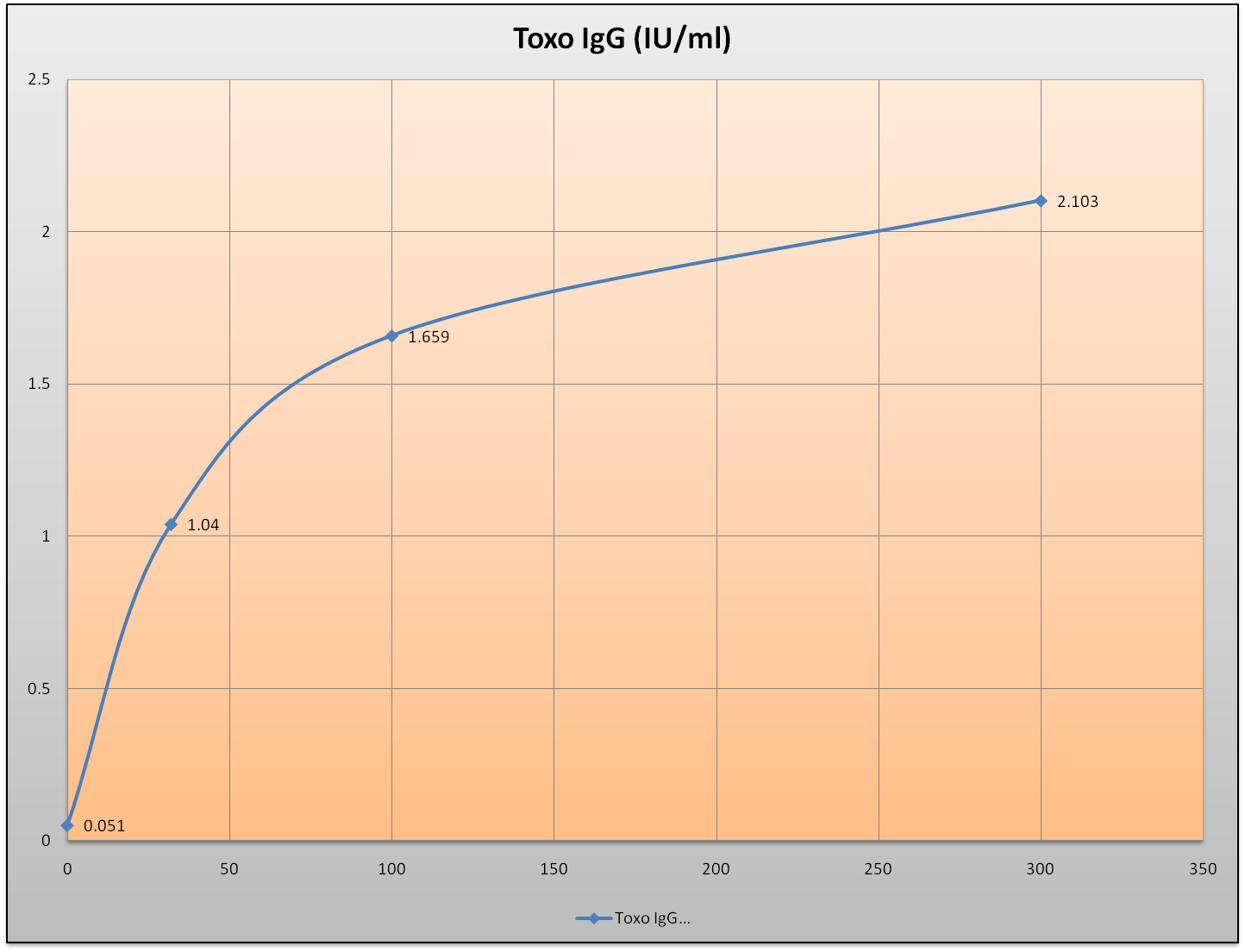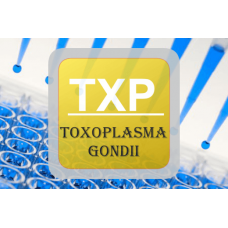Shopping Cart
0 item(s) - $0.00Toxoplasma ELISA - Toxo IgG
Availability: In Stock
Add to Compare
ENZYME IMMUNOASSAY FOR THE DETECTION OF IgG ANTIBODIES TO TOXOPLASMA GONDII IN SERUM
FOR RESEARCH USE ONLY. NOT FOR USE IN DIAGNOSTIC PROCEDURES
SUMMARY
Toxoplasmosis is a parasitic disease caused by the protozoan Toxoplasma gondii. The parasite infects most genera of warm-blooded animals, including humans, but the primary host is the felid (cat) family. Infection occurs: 1.) By eating infected meat, particularly swine products. 2.) By ingesting water, soil, or food that has come into contact with infected animals' fecal matter. This is most commonly spread in feces by household cats. 3.) By transmission from infected mother to fetus during pregnancy. This is why physicians recommend pregnant women not to clean litter boxes or eat under-cooked meat products. Up to half of the world's human population is estimated to carry a Toxoplasma infection. The most recent US data from 2014 indicated the rate as 22.5% nationwide and 29.2% in the northeast US. One study claimed a seroprevalence of 75% in El Salvador. Official assessment in Great Britain places the number of infections at about 350,000 a year. Toxoplasmosis is usually asymptomatic, but during the first few weeks after exposure the infection may cause a mild, flu-like illness. However, those with weakened immune systems, such as those with AIDS and pregnant women, may become seriously ill, and it can occasionally be fatal. The parasite can cause encephalitis (inflammation of the brain), neurological diseases, and can affect the heart, liver, inner ears and eyes (chorioretinitis). Recent research has also linked toxoplasmosis with attention deficit hyperactivity disorder, obsessive compulsive disorder, and schizophrenia. Numerous studies found a positive correlation between latent toxoplasmosis and suicidal behavior in humans. Research related to the effects of toxoplasmosis on personality and mental health was awarded the 2014 Ig Nobel Prize in Public Health. Charles Nicolle and Louis Manceaux first described the organism in 1908, after they observed the parasites in the blood, spleen, and liver of a North African rodent, Ctenodactylus gundi. In 1923, Janku reported parasitic cysts in the retina of an infant who had hydrocephalus, seizures, and unilateral microphthalmia. Wolf, Cowan, and Paige (19371939) determined these findings represented the syndrome of severe congenital T. gondii infection.
PRINCIPLE OF THE TEST
Purified Toxoplasma gondii antigen is coated on the surface of microwells. Diluted serum sample is added to the wells, and the Toxoplasma gondii IgG-specific antibody, if present, binds to the antigen. All unbound materials are washed away. HRP-conjugate is added, which binds to the antibody-antigen complex. Excess HRP-conjugate is washed off and a solution of TMB Reagent is added. The enzyme conjugate catalytic reaction is stopped at a specific time. The intensity of the color generated is proportional to the amount of IgG-specific antibody in the sample. The results are read by a microwell reader compared in a parallel manner with calibrator and controls.
EXAMPLE OF STANDARD CURVE
Results of a typical standard run with optical density readings at 450 nm shown in the Y axis against Toxoplasma concentrations shown in the X axis. This standard curve is for the purpose of illustration only, and should not be used to calculate unknowns. Each user should obtain his or her own data and standard curve.

| General | |
| ANALYTE GROUP | Toxoplasma |
| GROUPING | Infectious Diseases:Virus |
| PRODUCT NAME | ELISA |
| STORAGE | Store the kit at 2-8°C |
| COUNTRY OF ORIGIN | USA |
| DISCOUNTS | Bulk Packaging; High Volume |
| ELISA | |
| TESTS PER KIT | 96 (12 x 8) |
| CALIBRATION RANGE | 0 - 300 IU/mL (Recommended) |
United Immunoassay, Inc. © 2025


































